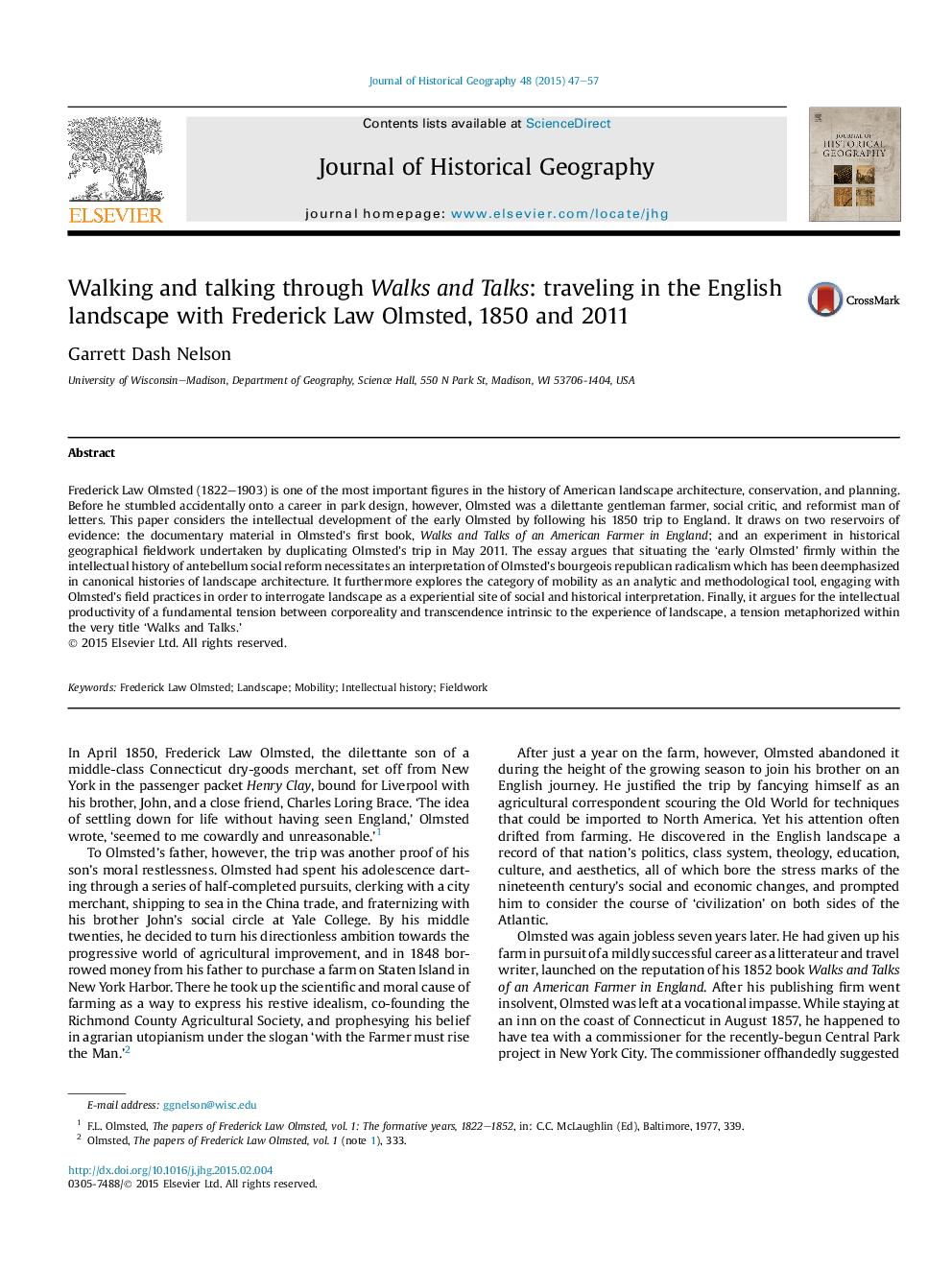| Article ID | Journal | Published Year | Pages | File Type |
|---|---|---|---|---|
| 1038967 | Journal of Historical Geography | 2015 | 11 Pages |
•Analysis of Olmsted's 1850 trip in England emphasizes his early work as a social critic.•Practices of ‘walking’ and ‘talking’ parallel concepts of embodiment and representation.•Reading ‘in situ’ establishes creative framework for engaging the history of ideas.
Frederick Law Olmsted (1822–1903) is one of the most important figures in the history of American landscape architecture, conservation, and planning. Before he stumbled accidentally onto a career in park design, however, Olmsted was a dilettante gentleman farmer, social critic, and reformist man of letters. This paper considers the intellectual development of the early Olmsted by following his 1850 trip to England. It draws on two reservoirs of evidence: the documentary material in Olmsted's first book, Walks and Talks of an American Farmer in England; and an experiment in historical geographical fieldwork undertaken by duplicating Olmsted's trip in May 2011. The essay argues that situating the ‘early Olmsted’ firmly within the intellectual history of antebellum social reform necessitates an interpretation of Olmsted's bourgeois republican radicalism which has been deemphasized in canonical histories of landscape architecture. It furthermore explores the category of mobility as an analytic and methodological tool, engaging with Olmsted's field practices in order to interrogate landscape as a experiential site of social and historical interpretation. Finally, it argues for the intellectual productivity of a fundamental tension between corporeality and transcendence intrinsic to the experience of landscape, a tension metaphorized within the very title ‘Walks and Talks.’
